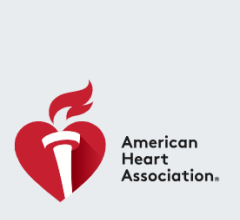
The startup company Genetesis introduced a new cardiac imaging modality it calls magnetocardiography. The scanner creates images from the biomagnetic activity of the heart, using the polarization and depolarization of the heart during the cardiac cycle.
Here are a few of the takeaways from the clinical studies presented and new technology shown on the exhibit floor at the 2018 American Heart Association (AHA) annual meeting in November.
New Cardiovascular Technologies on the AHA Expo Floor
AHA's exhibit hall has decreased in size in recent years, but there were still several first-time, innovative new technologies being shown. You can see all of these in the VIDEO: Editor's Choice of the Most Innovative New Cardiac Technology at AHA 2018.
One of the most interesting was a startup company called Genetesis, which had a big crowd around it when its best key investor Mark Cuban from Shark Tank made an appearance to get a heart scan with the company's new cardiac imaging modality. The system uses what they call magnetocardiography, which images the biomagnetic activity of the heart, using the polarization and depolarization of the heart during the cardiac cycle. The 90-second scan images the magnetic signature of the heart and is analyzed by an artificial intelligence algorithm to show if it is normal or will give a suspected diagnosis, which can be used to refer the patient for a more appropriate modality to confirm the triage diagnosis. It does not use any radiation to produce the images and does not require beta blockers.
Startup company Skylab showed a new ECG ring that the patient wears and interfaces with a smartphone app for automated analysis of the waveforms. The company's studies found it had 96 percent accuracy for detecting atrial fibrillation.
Several vendors showed digital stethoscopes. One of the most innovative was from Eko, which can record heart sounds and ECG. A smartphone app is used to download the audio or ECGs to be analyzed by an automated algorithm that is still pending 510(k). The app is similar to the music identification app Shazam, where it listens to the audio and offers an interpretation of the sounds. Read more about Eko's AI algoithm study presention at AHA 2018.
Drug Helps Significantly Reduce Triglycerides
The biggest late-breaking presentation was the REDUCE-IT Trial, which found Vascepa combined with statins significantly reduces cardiovascular events in patients with uncontrolled triglycerides despite use of statin therapy.
Researchers in the Reduction of Cardiovascular Events with Icosapent Ethyl-Intervention Trial (REDUCE-IT) looked at icosapent ethyl, a highly purified eicosapentaenoic acid (EPA) ethyl ester, which is an omega-3 fatty acid purified from fish oil. The primary endpoint showed a 25 percent reduction in cardiovascular death, nonfatal myocardial infarction, nonfatal stroke, coronary revascularization or unstable angina. The secondary endpoint showed a 26 percent reduction in cardiovascular death, nonfatal myocardial infarction or nonfatal stroke.
Watch a VIDEO interview on the details of the study with Deepak L. Bhatt, M.D., principal investigator of the REDUCE-IT Trial.
Use of Door-to-Unloading Instead of Door-To-Balloon Time
The biggest device technology late-breaker was the Door-to-Unload (DTU) Pilot Trial of 50 patients. This looked at using the Impella percutaneous ventricular assist device to mechanically unload the left ventricle and delaying reperfusion in patients with anterior ST-segment elevation myocardial infarction (STEMI).
To many people, it may seem counterintuitive to spend time first getting a patient onto hemodynamic support and then waiting before performing percutaneous coronary intervention (PCI) to reperfuse the blocked coronary artery. However, this pilot study showed use of hemodynamic support first can help buy time for the care team and does not impact patient outcomes.
The reason this trial was done was to find new ways to avoid damage to the heart that leads to heart failure, so the study tested if immediate hemodynamic support might help reduce infarct size, which is a primary driver for heart failure.
"Despite the contemporary approach of door-to-balloon time, we are still seeing a residual amount of heart damage with infarct sizes ranging from 15-40 percent, and a lot of that is due to reperfusion injury," said Co-principal Investigator Navin Kapur, M.D., FACC, FSCAI, executive director for research and innovation, Tufts Medical Center. He said the take-home message from 13 pre-clinical studies that attempted to unload the heart prior to PCI in STEMI showed you have to unload the heart prior to PCI to avoid reperfusion injury. He said the pilot study looked at waiting 15 to 60 minutes prior to performing PCI and the best results appear to be after waiting 30-60 minutes.
"Delaying reperfusion with a platform to enable LV unloading did not increase infarct size, and that was one of the most important takeaway messages," Kapur explained. While the study was not powered to show any trends, he also noted the infarct size was lower in the delayed PCI arm of the study.
This data will be used to create a large, FDA pivotal study.
Watch the VIDEO interview with Kapur explaining this pilot trial.
Updated ACC/AHA Cholesterol Guidelines
New joint AHA and America College of Cardiology (ACC) cholesterol guidelines were released at AHA. These highlight more personalized risk assessments and new cholesterol-lowering drugs for people at the highest risk for cardiovascular disease (CVD).
“The updated guidelines reinforce the importance of healthy living, lifestyle modification and prevention. They build on the major shift we made in our 2013 cholesterol recommendations to focus on identifying and addressing lifetime risks for cardiovascular disease,” said AHA President Ivor Benjamin, M.D., FAHA. “Having high cholesterol at any age increases that risk significantly. That’s why it’s so important that even at a young age, people follow a heart-healthy lifestyle and understand and maintain healthy cholesterol levels.”
Coronary artery calcium scoring (CAC) exams performed using low dose computed tomography (CT) scans are now included in the recommendations to assess a patient's cardiovascular disease risk and determine if a patient will benefit from statin therapy. If a patient has a calcium score of zero, it means they are already extremely low risk for coronary disease and would not benefit from statins, explained CT calcium scoring expert Matthew Budoff, M.D., professor of medicine, David Geffen School of Medicine, UCLA, who spoke on the new guidelines at AHA.
Watch the VIDEO: New Cholesterol Guidelines Support CT Calcium Scoring for Risk Assessment, an interview at AHA 2018 with Budoff.
New HHS Physical Activity Guidelines
The U.S. Department of Health and Human Services (HHS) released the second edition of its Physical Activity Guidelines for Americans at AHA. This is the first update since 2008.
There are new key guidelines for children ages 3-5, and updated guidelines for youth ages 6 through 17; adults; older adults; women during pregnancy and the postpartum period; adults with chronic health conditions; and adults with disabilities.
Other AHA News and Video:
Links to all the American Heart Association 2018 Late-breaking Trials
VIDEO: Predictors and Outcomes of Reverse Remodeling in Heart Failure With Reduced Ejection Fraction — Interview with James Januzzi, M.D.
Ambulation Time Following EP Procedures Decreased With Vascular Closure Device
VIDEO: Cryoballoon Ablation Best Practice Guidelines — Interview with Wilber Su, M.D.
VIDEO: Use of Artificial Intelligence To Speed Cardiac Clinical Research — Interview with James Januzzi, M.D.
VIDEO: Reducing Hypertension Among African-Americans — Interview with Kim Allan Williams, Sr., M.D.





 November 14, 2025
November 14, 2025 









